If Cape May wasn’t such a long drive from home I’d be there more often. My 2014 birding trip to Cape May lasted for just a very few days in late April and early May.
The area is so well known for its bird life that there are plenty of resources to tap into, much of it courtesy of the New Jersey Audubon Society which owns and operates Cape May Bird Observatory. The society offers many field trips (listed in their website) and owns or manages various pieces of productive habitat. Great birding is not limited to properties belonging to NJAS, there are dozens of places to go, happily NJAS provides guides and maps to help you find these sites.
I’ll generalize and suggest that there are four or five ways to slice up Cape May for birders: Atlantic shoreline, Delaware River shoreline, tidal salt-marshes and inland woods and fields. Here’s some of where I enjoyed good birding and what I saw.
Wetlands Institute property on Stone Harbor Blvd. Here is a half-mile long dryish trail leading out to a tidal inlet. There are good views across the salt marsh and along the inlet. I enjoyed really good close up studies of: groups of grazing Brant, a handful of Least Sandpipers, many noisy Willet, a Green Heron and a Clapper Rail. Along the tidal creek were seven Whimbrel feeding alongside Short-billed Dowitchers, Dunlin and more Willets. There are birds all around ; my notes from a two hour walk also included: Great Egret, Fish Crow, Greater Yellowlegs, Forster’s Tern, Little Blue Heron, Black-bellied Plover, and American Oystercatchers. There are obviously many Clapper Rails around, you hear them all the time, they make a rhythmic scraping sound that diminishes in volume as it winds down, kind of a “Scraaat-scraaat -scraaat -scraaat-scraaat -scraaat “. Here’s a link to my blog entry for that day.
Higbee Beach Wildlife Management Area. This is a large tract of ocean-side land with beach dunes, low coastal scrub and impoverished woodland, rich broadleaf woodland, open fields and swampy woods; at least that’s what I saw and I barely scratched the surface. My visit was well timed for newly arrived neo-tropical migrants. For more about my experiences follow this link.
My notes included the following warblers: Yellow-rumped, Black & White, Prairie, Yellow, Magnolia, Ovenbird, Common Yellowthroat, American Redstart, Northern Waterthrush, Northern Parula, and if you still count it as a warbler, a Yellow-breasted Chat.
Also: White-eyed Vireo, Eastern Towhee, Chimney Swift, Baltimore Oriole, Blue-gray Gnatcatcher, Great-crested Flycatcher, Scarlet Tanager, Yellow-billed Cuckoo, Ruby-throated Hummingbird and Red-headed Woodpecker.
The area was originally (and still is) managed for woodcock hunting so there is lots of edge habitat with clearings that open out to fields. A couple of elevated observation stands are pleasant places to sit and watch quietly, that’s where I had good luck seeing Prairie Warblers, a Yellow-billed Cuckoo and a Yellow-breasted Chat.
Heislerville is a small fishing dock on the Maurice River. It’s a quiet place, not very easy to find; there must be many places just like it along the tidal coast. To keep from washing away in the worst of hurricane conditions, the roads are elevated on levees high above normal water level. Large impoundments flood during high tide and drain out at low tide, the rush of water through culverts provides good feeding for all kinds of waterfowl.
When I first arrived, the tide was high and thousands of shorebirds congregated in the impoundments. Later when the tide went down, the shorebirds all dispersed to feed on the miles of mudflats. See my blog entry for more.
My field notes for the hour or so I spent there included these wading shorebirds: Dunlin, Short-billed Dowitchers, Lesser and Greater Yellowlegs, Semi-palmated Plovers, Least Sandpipers, Black-bellied Plovers and Willett.
Then there were: Black Skimmers, Forster’s terns, Laughing and Bonaparte’s Gulls, Glossy Ibis, Snowy and Great Egrets, a Sandhill Crane, Clapper Rails, Ospreys and Bald Eagles.
Just around the corner from Heislerville is East Point Lighthouse a more coastal spot looking out over the Delaware River. Here we found Snow Geese, Sanderling, a Wilson’s Snipe and a Northern Harrier.
Belleplain State Forest is a large, rather fragmented expanse of mostly hardwood forest made up of oak and Blackgum with an understory of Holly and Mountain Laurel. There are some creeks and lakes too and I’m sure it’s a great birding area and it would be easy to get lost at least on your first few visits. I was told Prothonotary, Hooded and Kentucky Warblers breed here although I didn’t see any. However I did see Yellow-throated, Worm-eating, Prairie and Black-throated Green Warblers. Also new to me was a Summer Tanager and I caught the explosive call of an Acadian Flycatcher and the song of White-eyed Vireos. Follow this link for more about my time in Belleplain State Forest.
I encountered one hundred and twenty two species during my three days. But in this account I have generally noted the highlights, but of course there is the usual background population of birds that are well, so commonplace that you tend to ignore them after a while. In this category I’d include: Black Duck, Great-blue Heron, Black and Turkey Vultures, Bald Eagle, Bonaparte’s Gull, Forster’s Tern, Red-bellied Woodpecker, Eastern Kingbird, Fish Crow, Tree Swallow, Carolina Chickadee, Tufted Titmouse, Carolina Wren, Eastern Bluebird, Brown Thrasher, Eastern Towhee, Field Sparrow, Seaside Sparrow, Indigo Bunting and Boat-tailed Grackle.
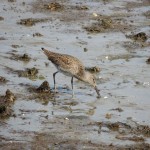
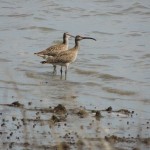
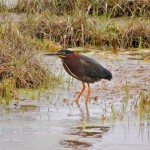
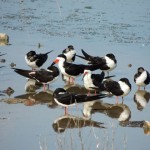
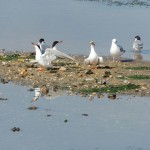
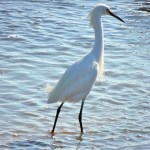
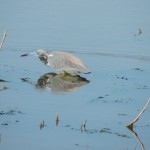
Just came across this post and I am planning to go to Cape May this weekend, thank you so much for taking the time to describe all birding spots, I thought I knew where to go but I really appreciate all the detail and what birds to expect in the area. I feel so lucky someone did all the research and writeup already, thanks a million